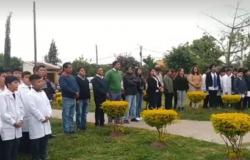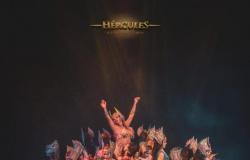More than a century ago, in 1906, the magazine “Ciencias y Letras” came to light in the city of Salta. Before her, very few cases of magazines are known. For the 19th century, we can point out “The Friend of Childhood”, a monthly, published in 1874 and directed by Francisco Alsina; the “School Bulletin”, appeared in 1897, directed by José E. Alderete and where many Salta intellectuals of the time wrote; “The Magazine”, appeared in 1897 under the direction of W. Gorriti; “The Salteño educator” (1897) and “Búcaro Salteño” (1899).
Already in the 20th century, in 1904, the Salta magazine “Quo Vadis” was published, biweekly, on literary, social and general interest topics, directed by Nicolás López Isasmendi. Important figures such as Casiano Hoyos, David Zambrano, Delfín G. Leguizamón, Agustín Usandivaras and the ladies Benita Campos and María Torres Frías collaborated there, who would later stand out as historian and poet respectively.
Benita Campos would create the literary and social magazine “Güemes” in 1907, whose true character was historical and where prominent historians from the country and abroad collaborated. Luckily, much of this information about newspapers, magazines and other printed matter from Salta in the past was compiled and published by Miguel Solá in his book “La Imprenta en Salta: Cien Años de Prensa (1824-1924)” (Buenos Aires, 1924, 138 p.), today a precious and unavoidable bibliographic source.
The magazine “Ciencias y Letras” came out biweekly, in a 15 x 22 cm format, with a minimum of 60 pages, good paper and cardboard covers, under the direction of Florentino M. Serrey. It was identified as the organ of the “Intellectual Development” center, founded by the professors of the Normal School of Teachers. The annual subscription was 9 pesos in the national currency and was printed at 637 Caseros Street, in Antonio Rodríguez’s “La Industrial” printing press and bookstore. Serrey was accompanied by Alcides G. Suarez as secretary and Alfonso Baissac as administrator. They were joined by six editors, doctors Pedro J. Frías, Sidney Tamayo and David Zambrano, Messrs. Francisco M. Núñez and Ricardo López, and Miss María Torres Frías, a prominent poet and writer from Salta.
The spirit of a rising century
I have in my hands number 2, from August 1906, which allows us to appreciate the spirit of the time and the thoughts of those nineteenth-century Salteños.
Among the guiding ideas it is mentioned that the aforementioned association of “Intellectual Promotion” was to “…revive in the memory of the people the actions of those men, especially the sons of the province of Salta who, due to their talents, their virtues and the historical era in which they practiced these faculties, are included among the undisputed creators of this great political-civilizing organization that we call the Argentine Republic.”
The issue mentioned here as a reference begins with an interesting biography of Dr. Facundo de Zuviría written by Ricardo López, based on documentation preserved by his descendants. Next, the ceremony for the graduation of the normal teachers who graduated in 1905 is described, their names, the speeches, the ceremonial program and the party held in the halls of the 20 de Febrero Club. The diplomas were personally delivered by Governor David Ovejero, who was preceded and preceded in his mandate by Ángel Zerda.
History, reason and faith
One of the speeches was given by Dr. Sidney Tamayo (1844-1910). Tamayo was an important doctor from Salta who was educated in Entre Ríos, received a scholarship from Urquiza, served in the Paraguayan War, participated in numerous missions to combat epidemics and was a provincial senator, interim governor and national deputy. He donated the block of Entre Ríos and Sarmiento so that the Children’s Hospital could be built there. He wrote books about Urquiza and about the Concepción del Uruguay school where he studied. Tamayo based his speech on the virtue of charity, on the educational role of primary teachers, on the virtues and feeling of patriotism, seeking to inflame those young hearts and saluting their intelligence and beauty.
One of the hobbies of bibliophiles is to find in the copies of the physical book, on paper, marginal notes, photos, postcards, stamps, stamps from old bookstores, dried leaves and other treasures that were stored there from owner to owner. My old copy has at the end of Tamayo’s speech some handwritten paragraphs in delicate calligraphic handwriting, ant type, from someone who must have been a sneaky enemy, most likely a priest. He writes: “…He has not said [Tamayo] a single illuminating word of the path that, as responsible before Society, they must continue to lead by the hand in their first steps to childhood… How will they interpret charity if none of the other virtues that are listed without having received either before or now, even a spark of Faith, of the knowledge and love of God – of Divine Reason – of the reason of all the reasons that you stubbornly want to supplant with the false boasts of human reason, reason that is vain and arrogant in that it disdains and departs from the essence of its Creator?
Oh Tartuffes of the 19th century who have dumped on the Earth all the dregs of hell with Liberal Pride! You will pay dearly for that sin.”
Tamayo was educated in a Masonic school and received a scholarship from Urquiza. The intellectual and dialectical confrontation emerges clearly in that anonymous text.
The other speech corresponds to Dr. Pedro J. Frías (1854-1909). From Salta by birth and a doctor by profession, he also had to participate in the Paraguayan War and the cholera epidemic campaigns like his colleague Tamayo. He was governor of Salta and national senator, as well as a professor at the National School and the Normal School. As was the style in those years, the speech is flowery, almost baroque, appealing to nature and the Greek classics.
It begins with a geological invocation: “As the Andes arose from the deep bosom of the waters to rise majestically, splendid in the diaphanous blue of the skies of America, bathing there in torrents of light; as our flowery, fertile and immeasurable plains and lush jungles; as our giant rivers flow from their inexhaustible sources…” And thus continues his long speech in a parallel between the geological evolution of the planet Earth and the evolution of man until reaching the heroes of May and other anniversaries in the names of Moreno, Rivadavia, Belgrano, Güemes and San Martín.
The speech is aimed at raising the spirit of those young teachers who are going to go out to fulfill the role of educating future children in the noble career of teaching.
A vintage landscape
Then continues an article by V. de la Vega entitled “Educational manual work” where he defends the importance that, along with theoretical lessons, manual work is not neglected in children.
María Torres Frías (1883-1954), a poet, teacher and writer from Salta who leaves some literary pages titled “Crepusculares” also writes in that issue. As she sees herself, she is the only woman in a dominant group of men and she is also remembered for having fought for the education of girls. Francisco M. Núñez writes a long article entitled “Mathematics and human knowledge” where he strives to demonstrate the importance of mathematics in all science studies, especially the natural sciences, and cites Humboldt in his favor, Roger Bacon, Francis Bacon, Spencer, among others.
Then there is an unsigned article on “Jurisprudence of the Courts of the Province.” There also appears a long text translated from French on applied physiology “Osmosis and cryoscopy”, written by Hallión of the Medical College of France. The level of this article and its unsigned translation never ceases to draw attention. F. López writes a short article titled “History and its regressions.” Francisco M. Núñez writes a second article in the magazine which he titles “The normal institution: its necessary reform”, in reference to pedagogical and didactic issues. Under the signature MS (Miguel Solá?) there is a very interesting article about the two old cities of Esteco along the Pasaje River and their extinctions, the last due to the earthquake of 1692.
Then there is an article about “The conferences of Father Grotte”, a German priest who arrived in Buenos Aires in 1884. The conferences were about “The strike in its economic face” and another about “Free thought.” Federico Grotte was the one who started the pilgrimages to Luján.
Also accompanied is the obituary of Don Miguel Fleming (1829-1906), a prominent Irish pharmacist based in Salta and genearch of a large family tree of Salteños, written by Francisco Núñez.
Finally, demographic tables, meteorological observations, police statistics, greetings to the magazine of the newspapers El Liberal, El Cívico and Tribuna Popular. A separate point is constituted at the end by some color pages with advertising of commercial houses, especially shops, tailor shops, warehouses, haberdasheries, hardware stores and bookstores (Urrestarazu, Viñuales, Usandivaras, De los Ríos, etc.). As seen, an interesting and almost unknown magazine with scientific, literary and historical articles at the dawn of the 20th century in Salta.






